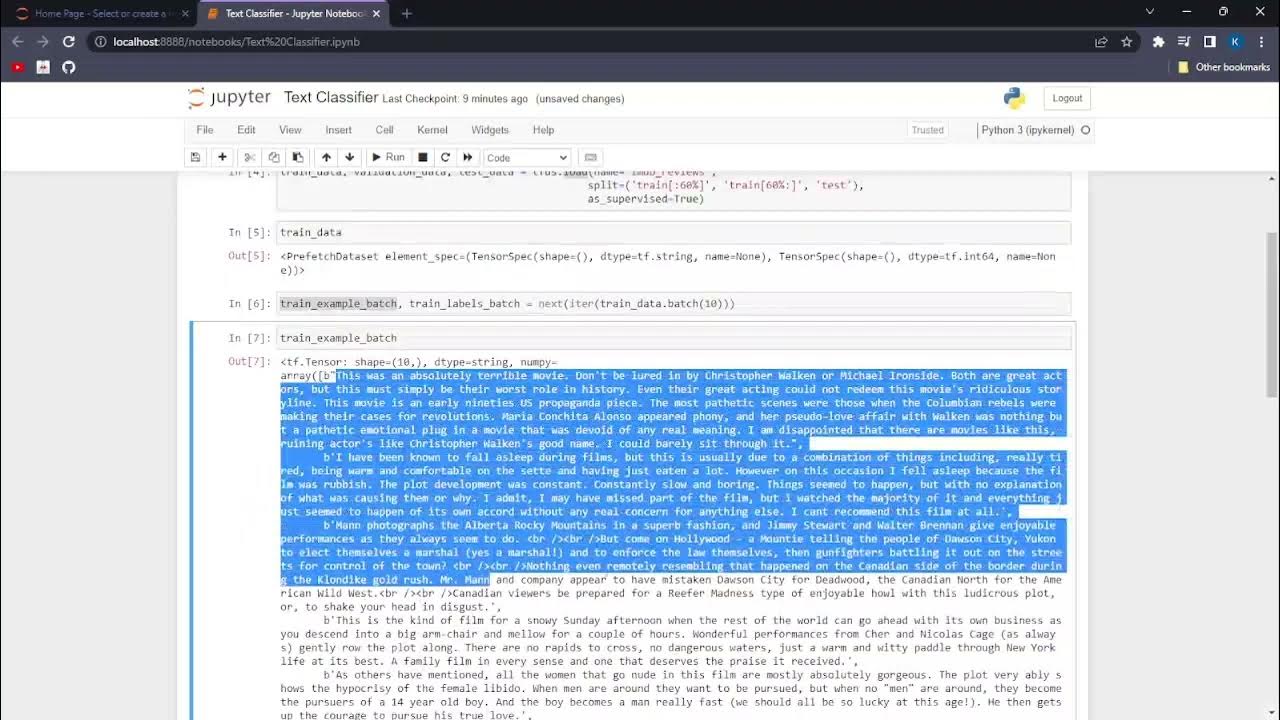*FEEDBACK ANALYSIS USING MACHINE LEARNING* Minor Project
Summary
TLDRThis project focuses on feedback analysis using machine learning, categorizing text into positive, negative, or neutral sentiments. The methodology includes five key steps: tokenization (splitting sentences into words), cleaning data (removing irrelevant characters), removing stop words (eliminating meaningless words), classification (using SVM to label words), and calculation (computing the final sentiment score). The machine learning model processes user reviews, removing junk words and highlighting keywords. A word cloud visualization highlights key factors like battery, sound quality, and noise cancellation in products like earphones, offering a clear, structured approach to sentiment analysis.
Takeaways
- 😀 Tokenization is the process of breaking sentences into individual words to prepare for analysis.
- 😀 Data cleaning involves removing special characters or irrelevant elements from text to focus on valuable information.
- 😀 Stop words (words that don’t add meaningful value) are removed to improve the accuracy of the analysis.
- 😀 The Support Vector Machine (SVM) algorithm is used to classify words as positive, negative, or neutral based on predefined datasets.
- 😀 The classification step assigns polarity values: +1 for positive, -1 for negative, and 0 for neutral.
- 😀 The final sentiment is calculated by summing the polarity values of words in the sentence (positive feedback if the sum is positive).
- 😀 The project utilizes libraries and a dataset to implement machine learning algorithms like SVM and Naive Bayes.
- 😀 The machine learning algorithm generates categorized feedback, organizing reviews into positive, negative, or neutral categories.
- 😀 Data visualization techniques like word clouds are used to represent the importance of specific words in the feedback.
- 😀 The word cloud visually highlights key aspects such as battery, sound quality, and noise cancellation, indicating their importance in product reviews.
- 😀 The output shows review star ratings and the number of users who rated products, providing an overview of customer satisfaction.
Q & A
What is feedback analysis in machine learning?
-Feedback analysis in machine learning refers to the process of categorizing a piece of writing into three sentiment categories: positive, negative, and neutral. This classification helps in understanding the overall sentiment of a given review or feedback.
What are the five steps involved in feedback analysis using machine learning?
-The five steps involved in feedback analysis using machine learning are: 1) Tokenization, 2) Cleaning the data, 3) Removing stop words, 4) Classification, and 5) Calculation.
What is tokenization in the context of feedback analysis?
-Tokenization is the process of breaking down a sentence into individual words or tokens. For example, the sentence 'The movie was great' is tokenized into ['The', 'movie', 'was', 'great'].
Why is cleaning the data important in feedback analysis?
-Cleaning the data is important because it removes special characters, irrelevant symbols, and unnecessary information that do not contribute to the analysis, such as exclamation marks or punctuation marks.
What are stop words, and why are they removed during feedback analysis?
-Stop words are common words like 'she', 'was', or 'her' that do not add significant meaning to the analysis. Removing stop words helps in focusing on the important words that contribute to sentiment classification.
How does the classification step work in feedback analysis?
-In the classification step, words are classified as positive, negative, or neutral based on predefined datasets using machine learning algorithms, such as the Support Vector Machine (SVM) algorithm.
What is the role of the SVM algorithm in feedback analysis?
-The SVM algorithm helps in classifying words based on their polarity—positive, negative, or neutral—by using predefined training datasets to evaluate the sentiment of the words.
How is the polarity of feedback calculated?
-The polarity is calculated by summing the values assigned to each classified word. For example, if 'movie' is classified as neutral (0) and 'great' as positive (+1), the overall polarity might be classified as positive.
What is the significance of the word cloud in feedback analysis?
-The word cloud is a data visualization technique that represents text data, where the size of each word indicates its importance or frequency in the dataset. It helps in visually identifying the key terms associated with the feedback, such as 'battery', 'sound quality', or 'noise cancellation'.
How are the reviews categorized in the feedback analysis?
-Reviews are categorized based on the sentiment classified through machine learning algorithms. They are divided into positive, negative, and neutral categories, and star ratings (0 to 2 stars) are used to represent the feedback.
Outlines

このセクションは有料ユーザー限定です。 アクセスするには、アップグレードをお願いします。
今すぐアップグレードMindmap

このセクションは有料ユーザー限定です。 アクセスするには、アップグレードをお願いします。
今すぐアップグレードKeywords

このセクションは有料ユーザー限定です。 アクセスするには、アップグレードをお願いします。
今すぐアップグレードHighlights

このセクションは有料ユーザー限定です。 アクセスするには、アップグレードをお願いします。
今すぐアップグレードTranscripts

このセクションは有料ユーザー限定です。 アクセスするには、アップグレードをお願いします。
今すぐアップグレード5.0 / 5 (0 votes)






